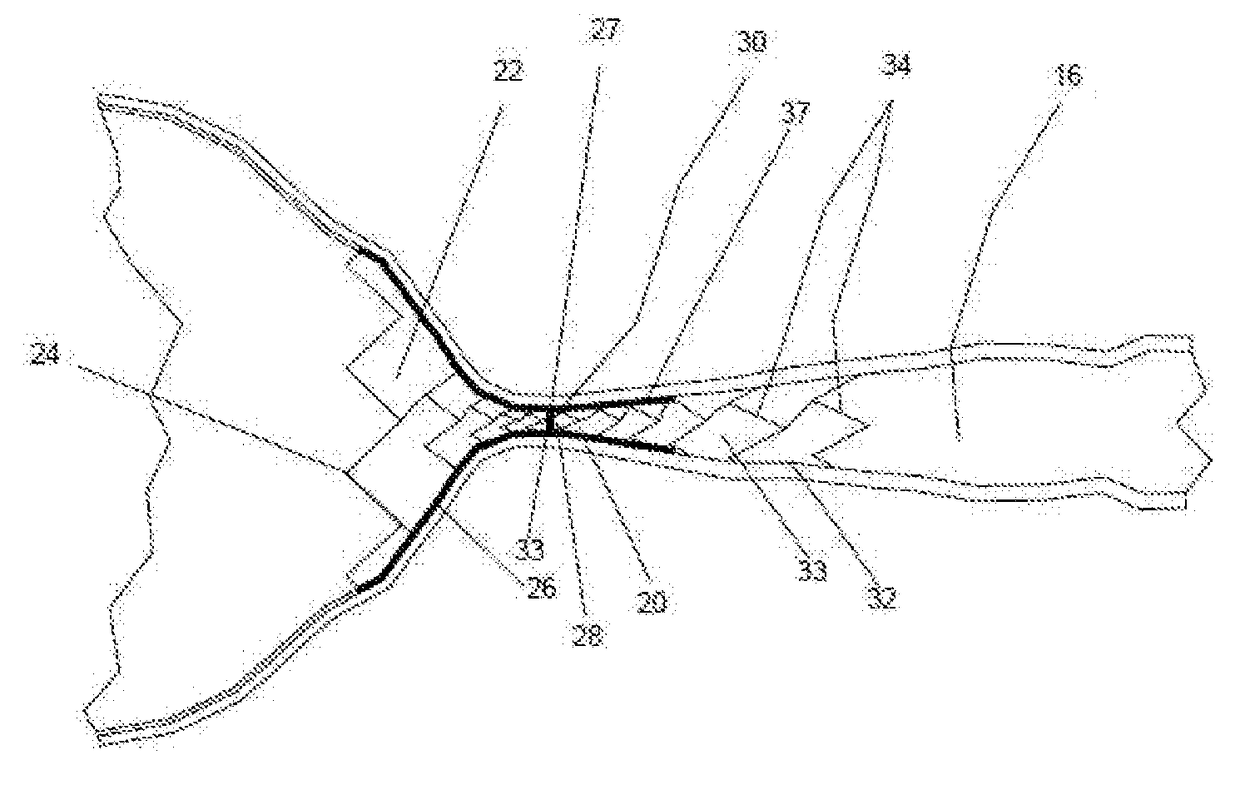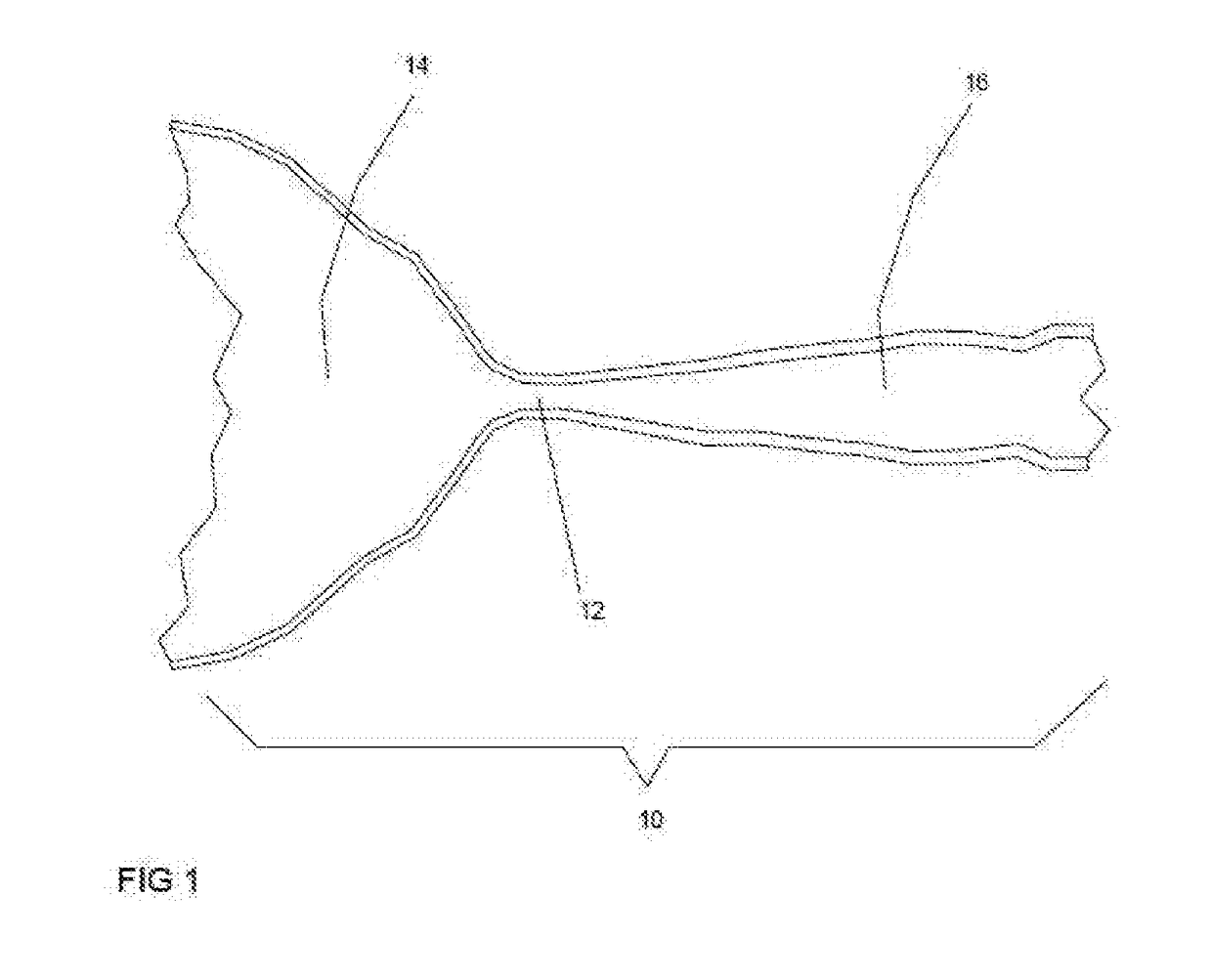Fallopian Tube Occluding Device, Delivery Catheter and Method
a technology of occluding device and fallopian tube, which is applied in the field of endoluminal occluding device, can solve the problems of inconvenient access for many women throughout the world, high cost, and inconvenient operation of tubal ligation via trans-abdominal approach, and achieves the effects of reducing the risk of complications, reducing the safety of patients, and improving the quality of li
- Summary
- Abstract
- Description
- Claims
- Application Information
AI Technical Summary
Benefits of technology
Problems solved by technology
Method used
Image
Examples
Embodiment Construction
[0032]FIG. 1 shows the typical anatomy 10 of the entrance to the fallopian tube (16) from the uterus (14). It consists of a conical entrance having a large angular portion in the shape of a cone and a narrow lumen (12) that gradually expands to an irregular yet another conical structure that ends in irregular diverging funnel type anatomy. The egg from the ovary travels down this tube (16) to the uterus (14) and is fertilized when in contact with the sperm.
[0033]FIG. 2 shows the proposed acute and permanent occlusion device that permanently hermetically seals the fallopian tube so that the sperm and the egg do not get in contact with each other and hence causes permanent sterilization of the human female. The occlusion device (20) consists of three segments. Segment (22) is the sealing segment that abuts with the ostium of the fallopian tube completely sealing the entrance to the fallopian tube, segment (28) that is smaller in diameter and lies within the proximal fallopian tube (16...
PUM
 Login to View More
Login to View More Abstract
Description
Claims
Application Information
 Login to View More
Login to View More - R&D
- Intellectual Property
- Life Sciences
- Materials
- Tech Scout
- Unparalleled Data Quality
- Higher Quality Content
- 60% Fewer Hallucinations
Browse by: Latest US Patents, China's latest patents, Technical Efficacy Thesaurus, Application Domain, Technology Topic, Popular Technical Reports.
© 2025 PatSnap. All rights reserved.Legal|Privacy policy|Modern Slavery Act Transparency Statement|Sitemap|About US| Contact US: help@patsnap.com



